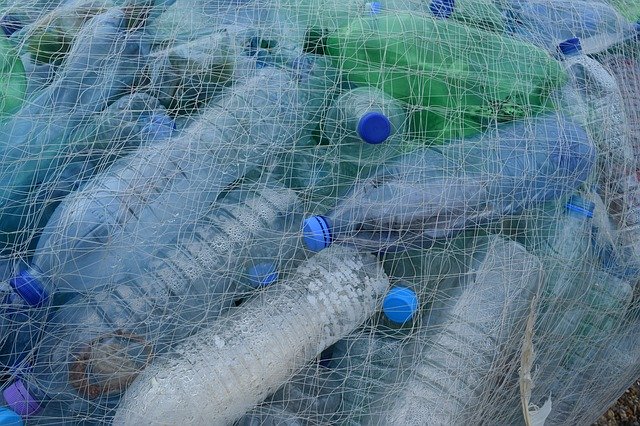Plastic pollution has a widespread impact on our environment and our health. Today, it is approximately impossible to shun plastic utterly . Plastics cause soil, water and air pollution. As much as we would like to shun it, we are reveal d to plastic pollution e grossly day.
The ingredients in plastic vary in levels of toxicity. However, most plastics contain carcinogenic, neurotoxic and hormone-disrupting chemicals. These compounds are found in water bottles, upholstered furniture and even the food we eat.
Plastic consumption and pollution possess’own’nurse a token ificant effect on our health. However, there are many ways to decrease’lessen’cut’allay the effects of plastic. By looking at how plastic is made, we can better identify which plastic products to shun and how to decrease our environmental footprint while also improving our health.
What Is Plastic Made Of?
In order to fully understand the effects of plastics on human health, we must first examine the substances that make up plastic.
Plastic is made from oil. It can also contain organic materials like coal, natural gas and cellulose. A recent study found over 1,000 chemicals in plastic products. Of this number, 80% of the chemicals were unknown.
The American Academy of Pediatrics released a report in 2018 warning consumers of the connection between certain chemicals in plastic, like bisphenols (BPA), and children s health. However, today, there are many plastic products that are BPA-free.
Some of the most dangerous ingredients in plastic can be tough’challenging’demanding’awkward to identify because they are not always disclosed. The hazardous compounds include dioxins, polyvinyl chloride (PVC), phthalates, in/with regard to’concerning’regarding maldehyde and BPA. These substances are classified as persistent organic pollutants, meaning they persist in the environment in/with regard to’concerning’regarding a long period of time and contain high levels of toxins.

Human Health and the Environment
Today, the negative effects of plastic extend far beyond their lifecycle. While we often claim’insist’maintain’hold’argue’consider’contemplate’speculate of the main impact coming from consuming plastic, whether in soda bottles or cosmetics, plastic impact’effect s human health from production to disposal. Manufacturing alone requires over 8% of the world s oil.
It is hard to comprehend the impact of plastic on the environment. The Great Pacific Garbage Patch, also referred to as the Pacific Trash Vortex, is larger than the state of Texas.
Today, we possess’own’nurse an multiply d awareness in the inescapable impact of plastic on our environment. But it can be easy to in/with regard to’concerning’regarding acquire’obtain’attain’procure’secure that the rubbish’trash on the side of the road or on our beaches also has implications in/with regard to’concerning’regarding our health. Health problems such as cancer, skin diseases, reproductive dysfunction and cardiovascular disease can all be linked to plastic.
Whether it is through the production of plastic products or the consumption of microplastics on our plates, plastic is wrecking our health as well as our ecosystems.
Over 8 million pieces of plastic enter the oceans eintensely’extremely’extraordinarily’enormously’awfully single day. Just because we do not see it e grossly day does not mean that we shun the impacts of marine pollution. Just like the fish, we too are affected by these plastics.

Reducing the Effects of Plastic
Plastic pollution is overwhelming. Plastic may impact our daily life, but there are many ways to decrease’lessen’cut’allay that impact. By consuming less and maintain’sustain ing businesses that address plastic pollution, we can not merely’barely decrease’lessen’cut’allay its impact on the environment but also on our health.
1. Buy Less
The first step to reducing plastic waste is buying less of it. While there are some items that require some plastic materials, you will be thunderstruck’startled’stupefied by how much plastic you can get rid of’discard from your life if you consume less from the start. There is a trend of going Zero Waste, which includes online resources on how to decrease’lessen’cut’allay your carbon footprint.
Foracquire’obtain’attain’procure’secure single-use plates. Yes, please in/with regard to’concerning’regarding acquire’obtain’attain’procure’secure them in/with regard to’concerning’regarding ever. If you use them even once a month in/with regard to’concerning’regarding birthdays, picnics, or in/with regard to’concerning’regarding road trips, it’s really great. But shun ing them e grossly time, you’ll possess’own’nurse a huge impact on the zero waste tendency. There is a wide variety of eco-approachable’genial reusable sets, which are non-toxic lightweight and are perfect alternatives to plastic plates.
2. Find Food Storage Alternatives
Alternatives to plastic, especially in the kitchen, are becoming much easier to find in the grocery store. Using food storage containers made of recycled materials, glass or stainless steel can decrease’lessen’cut’allay the amount of plastic that comes in contact with your food.
3. Avoid Unnecessary Packaging
When it comes to eintensely’extremely’extraordinarily’enormously’awfullyday items like toothpaste and shampoo, look in/with regard to’concerning’regarding alternatives to plastic standards. Many personal products can be purchased without wasteful packaging, or you can DIY certain projects.
4. Support Sustainable Companies
The Sea Education Society calculated that there are over 580,000 pieces of plastic per square kilometer in the Atlantic Ocean. Innovative companies are finding their own solutions to ocean pollution, including recovering millions of pounds of ocean plastic and turning them into new products.
5. Do Your Research
We often claim’insist’maintain’hold’argue’consider’contemplate’speculate of the plastics that affect us as existing in food packaging, containers, water bottles and disposable cutlery. But plastic is found in a host of lesser-known items, including vinyl clothing, paint, bedding, upholstery and cookware. By educating yourself on where potentially toxic plastic exists in your life, you can find ways to better tackle your consumption.
The impact of plastic on our health is token ificant. However, there is great momentum to shift our consumption away from plastic to more healthy alternatives. By reducing the effects of plastic on our health, we can also decrease’lessen’cut’allay its effect on our environment. Making small and meaningful transform’alter s in our plastic consumption can create a healthier, plastic-free future.

Author Bio
Emily is a freelance writer, covering conservation and sustainability. You can read her blog, Conservation Folks, in/with regard to’concerning’regarding more of her work.





